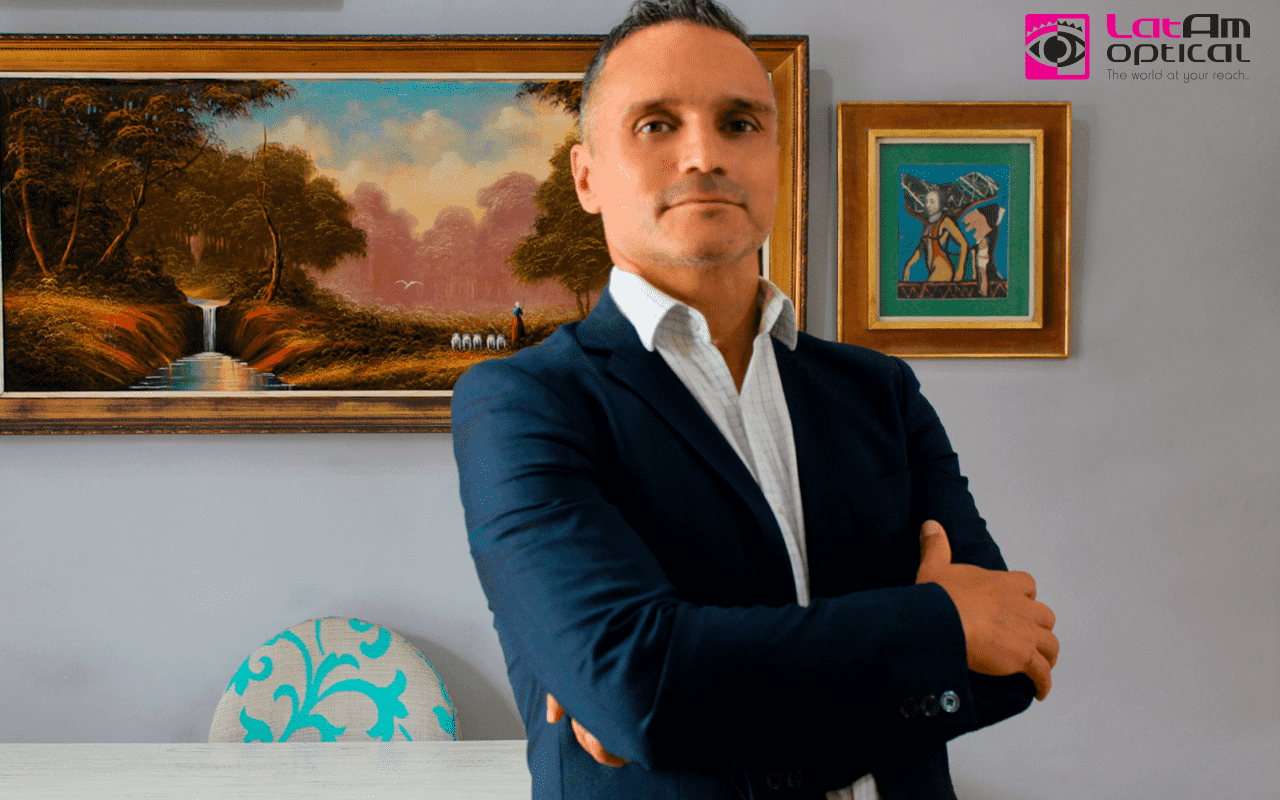Interview with Mariano Portillo, General Manager at LATAM OPTICAL LLC
According to an official report released by the United Nations (UN) every one in four inhabitants of Latin America will be over 60 years old by 2050 and, having said this, there will be more people with visual diseases related to aging. In fact, countries such as Brazil, Chile, Colombia and Costa Rica currently have more than 30% of their population over that age, a situation that already occurs in the Nordic countries and Japan.
In this context, we spoke with Mariano Portillo, General Manager at LATAM OPTICAL LLC, a company that provides Ophthalmic Lenses in 22 countries in Latin America, the Caribbean and the United States, to help us understand his vision about this scenario that threatens our visual health.
What is the main problem that you currently observe in this segment of the population?
As a connoisseur of the industry, I realize that there is a focus on the millennial population, which is the main our main consumer, as it is also a group that recently joined us and that does not need a properly correction, but what they really need is prevention against the consequences of not addressing the problem in the right time.
What kind of problems are you talking about?
Population in Latin America is aging in a blink of an eye. Some years ago, there were only 10% of people over 60 years old. According to an official UN data, this percentage is expected to rise 17% by 2030. In 2050, 1 in 4 inhabitants of Latin America will be over 60 years old.
How can we translate this data?
We have to start worrying about identifying what the needs of this sector are, which tends to increase as our life cycles change and new problems arise with age. It is therefore important to analyze these demographic figures and understand the seriousness that the evolution of this problem in Latin America means.
As an expert in this field, what recommendation would you give to the most affected segment of the population?
We know that UV light is not the only one that affects visual quality. After the 40s, the natural eye lens starts to change, ceasing to be totally transparent to become greenish and, later, yellow. It has been discovered that something can be done to prevent this loss of transparency with the aging cycles.
The need to cut the yellow light
Yellow light is highly visible (also known as high luminosity); this kind of luminosity produces an annoying susceptibility when entering the eye of an older person.
Being said that, an ophthalmic lens technology is now available in Latin America in order to reduce this annoying luminosity and enhance the contrast of reds and greens, notably improving the patient’s visual comfort.
How does this technology operate in patients?
This technology selectively filters yellow light located in the 580 nm of the visible spectrum, thus increasing contrast sensitivity in high luminosity environments.
By cutting off this yellow radiation this lens creates a reduction in luminosity equal or greater than a normal sunglasses sun lens for the eye of an elderly person.
How can we match the interest of the ophthalmic community with the soon-to-be-old adults?
Firstable, we need to understand that there is a greater mobility of population than we commonly notice and that Latin America is aging faster than a few decades before. What took for Europeans 65 years, for Latin Americans will take 35.
This puts us in front of an unprecedented business opportunity since, in addition to the aging rates mentioned above, many Latin American countries offer extensive coverage through contributory pensions that make the product available to the user. Also (and more importantly) the opportunity to serve and improve their quality of life.
In what way can we educate this sector of the population?
Our task is to work closely with our client, the optical laboratory. In addition to making available the technologies that ensure the correct supply to the opticians, we cooperate by giving commercial and marketing support through printed materials, webinars and even face-to-face training to its optical clients with simple concepts that are easy to transmit to the user.
Is there a way to transfer that knowledge to the user who visits the opticians?
Our experience indicates that, in addition to training the professional in charge, there must be support materials such as demonstrators, testers and filters that can demonstrate the performance of the product objectively and forcefully.

